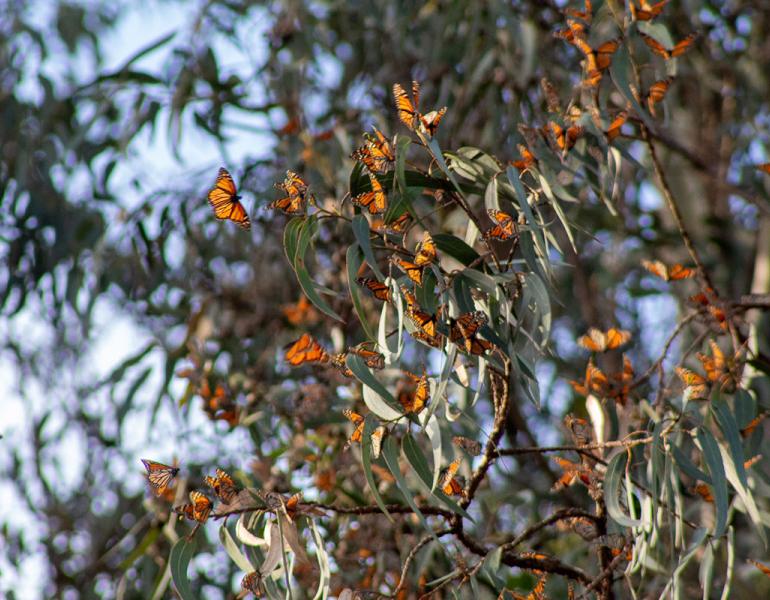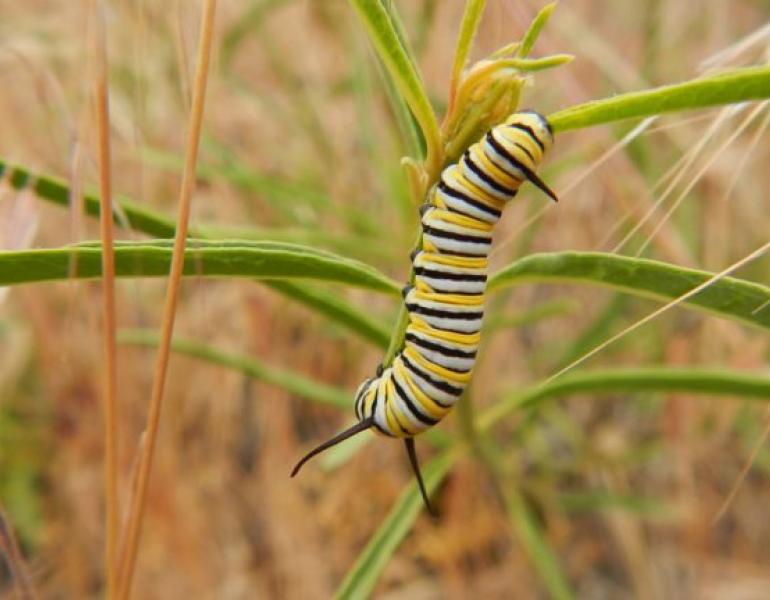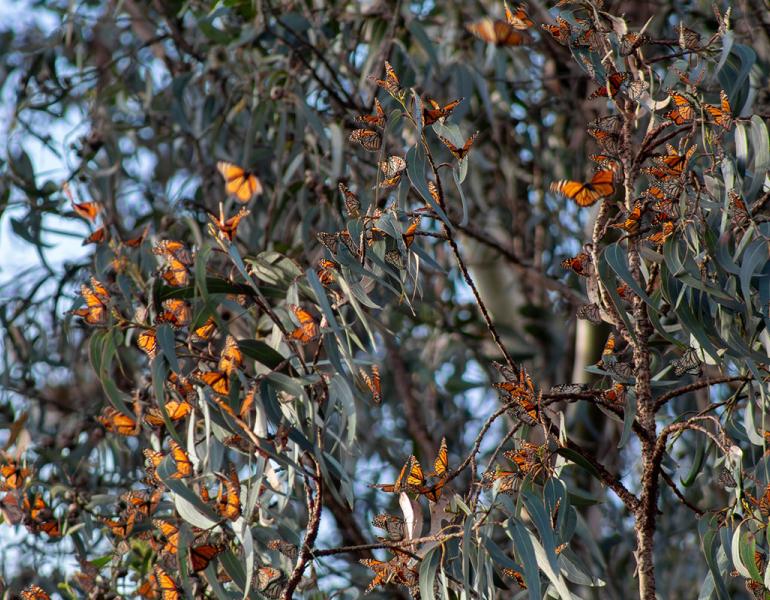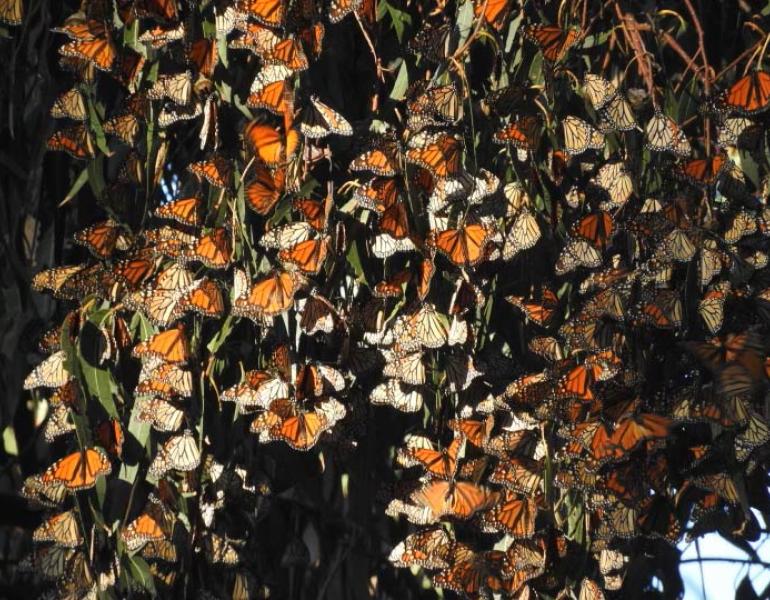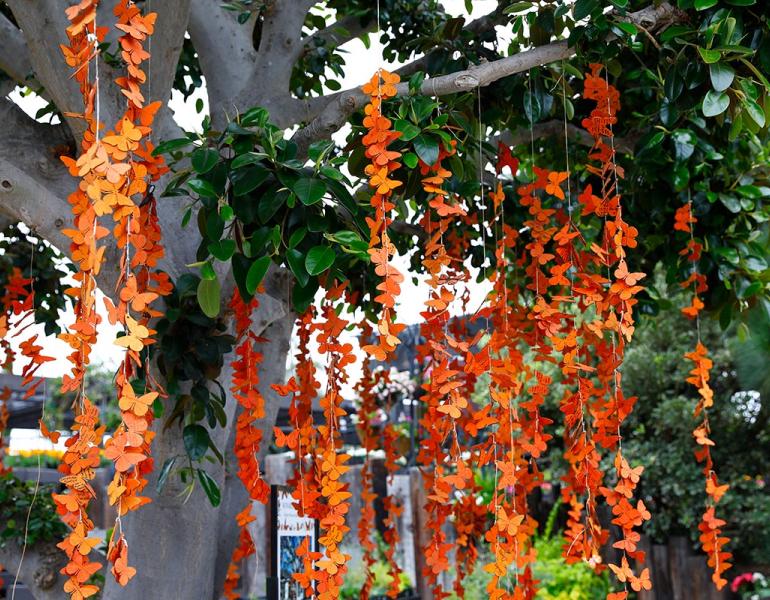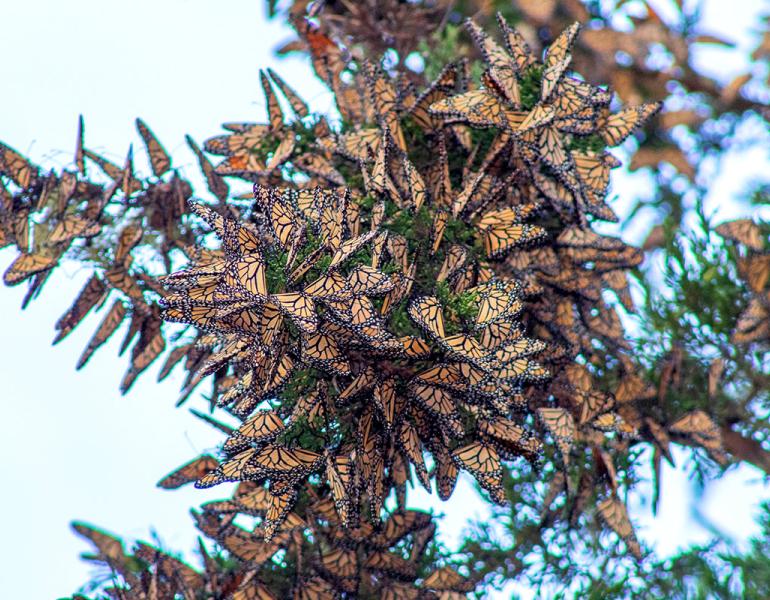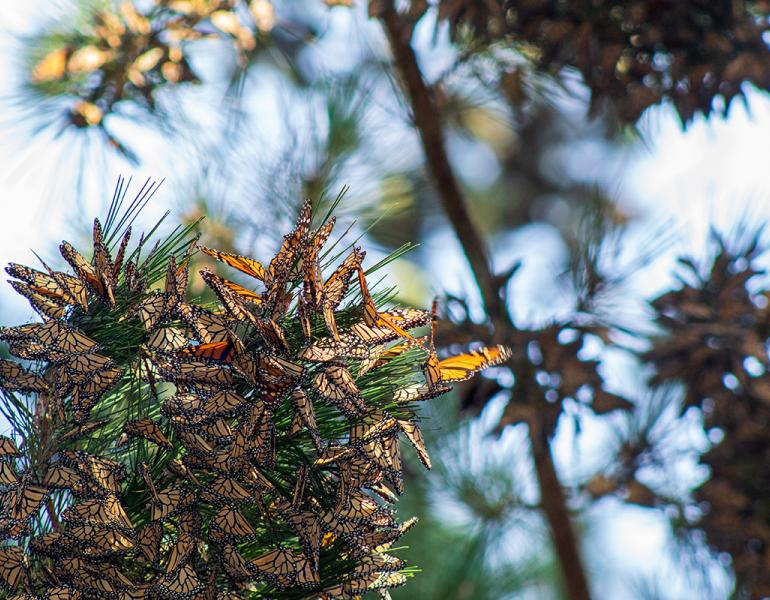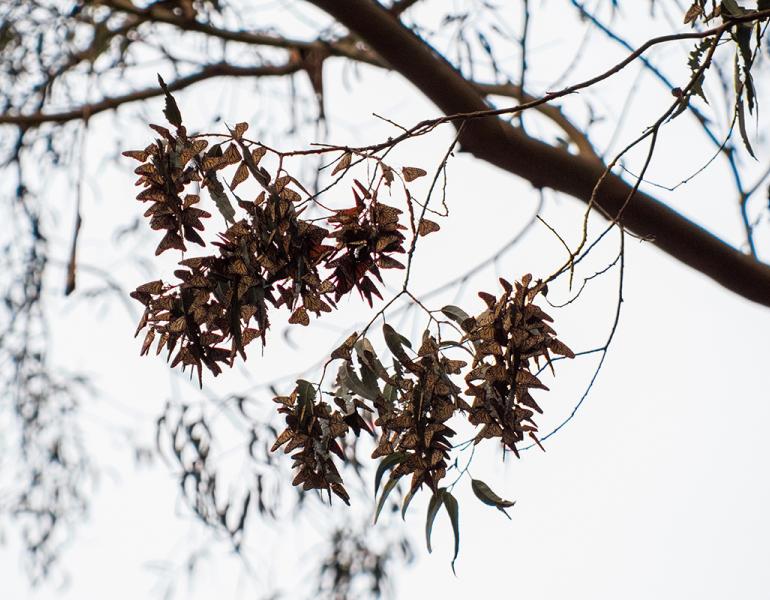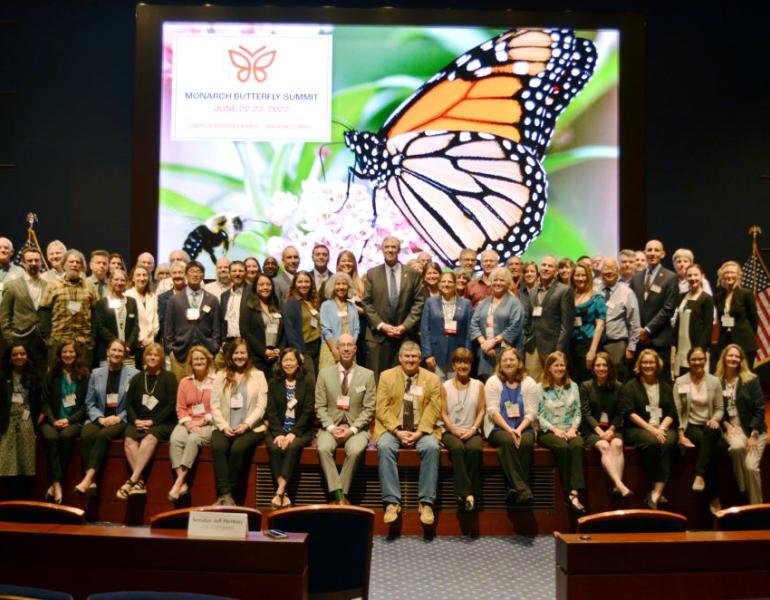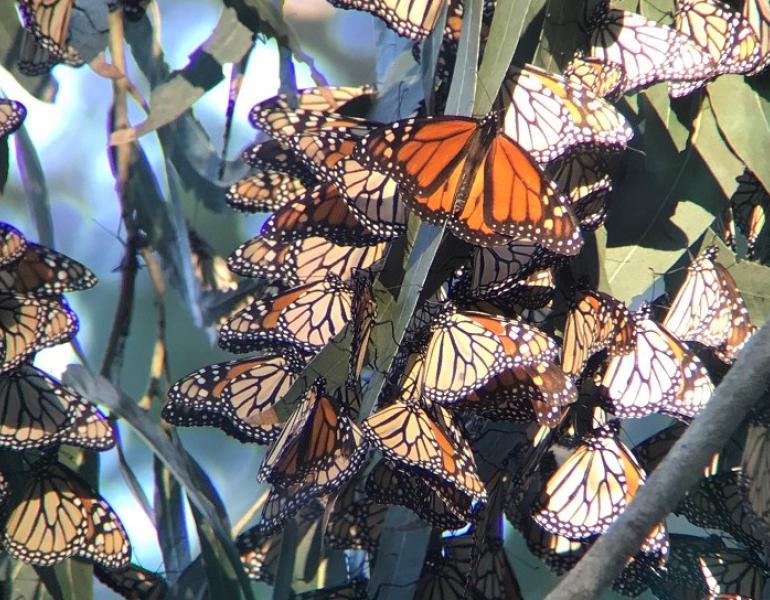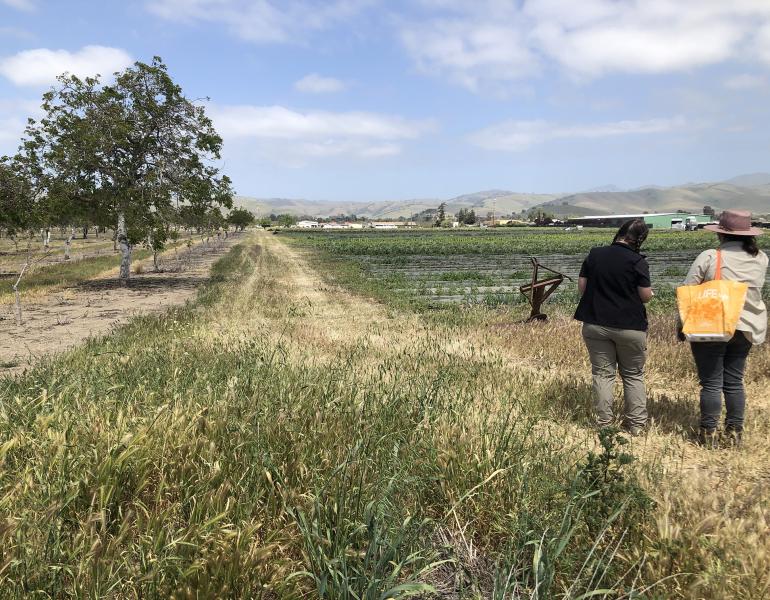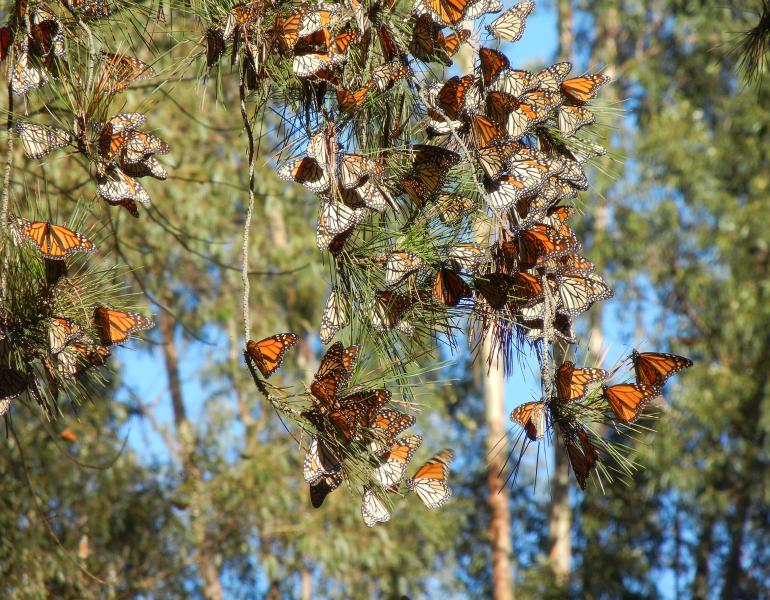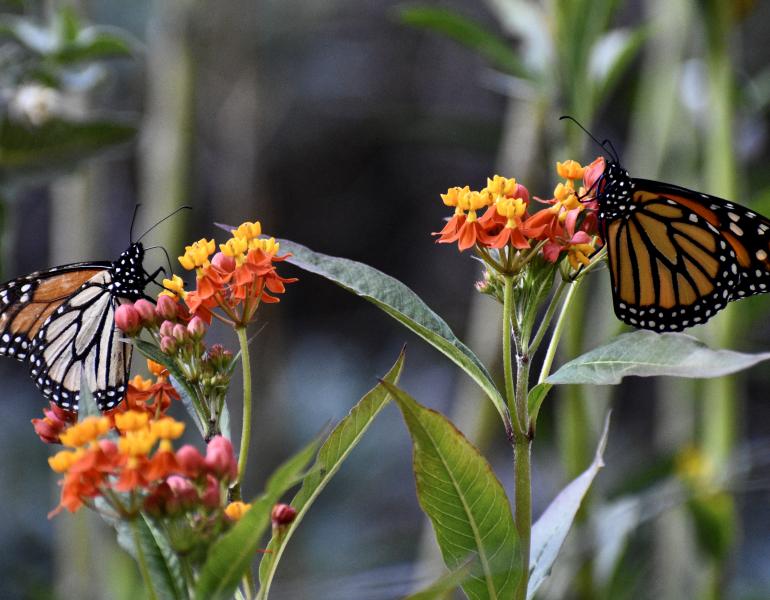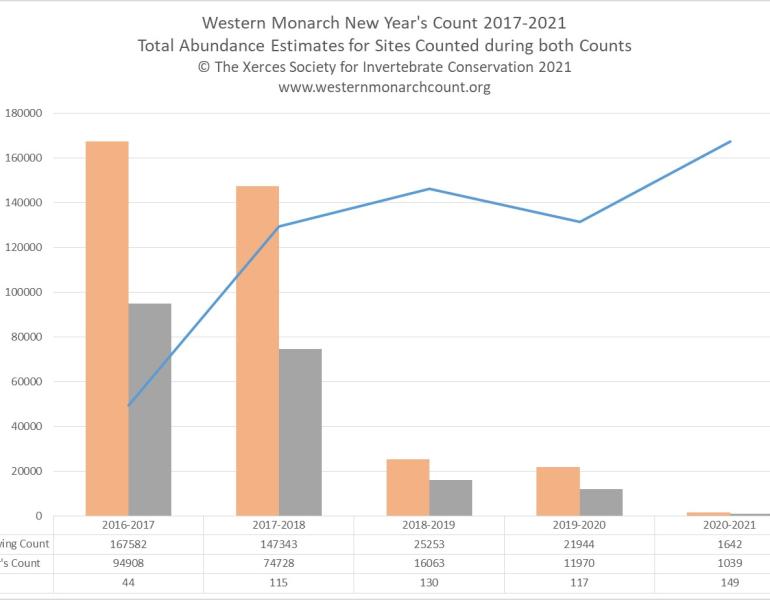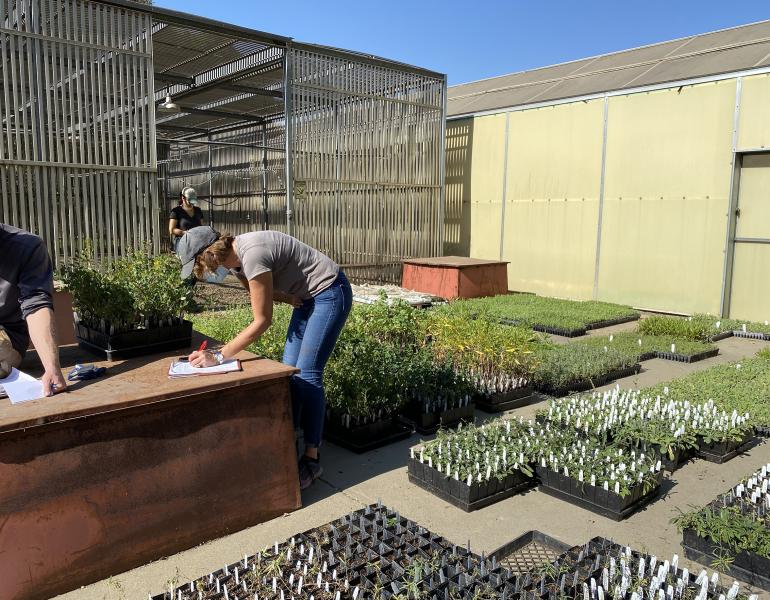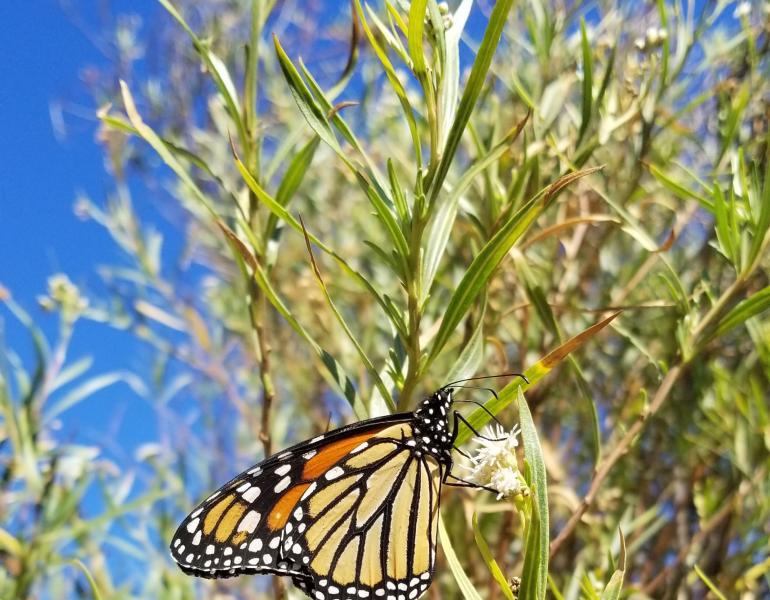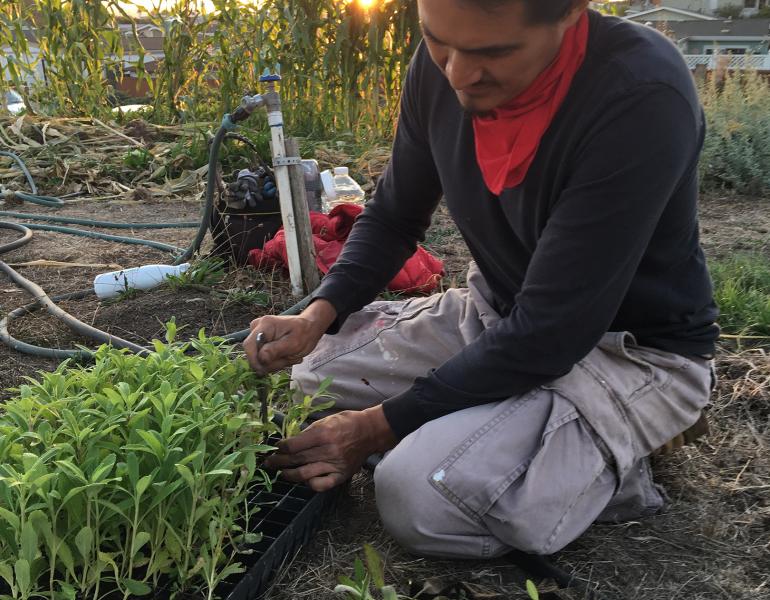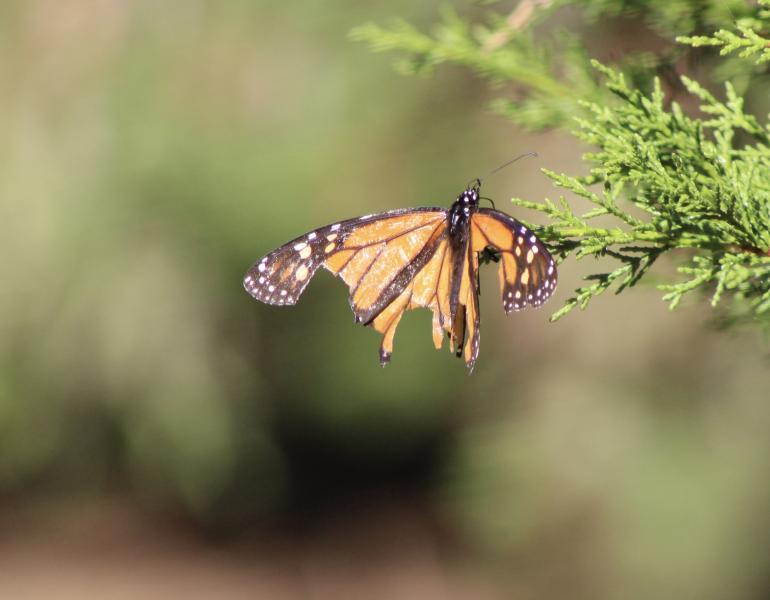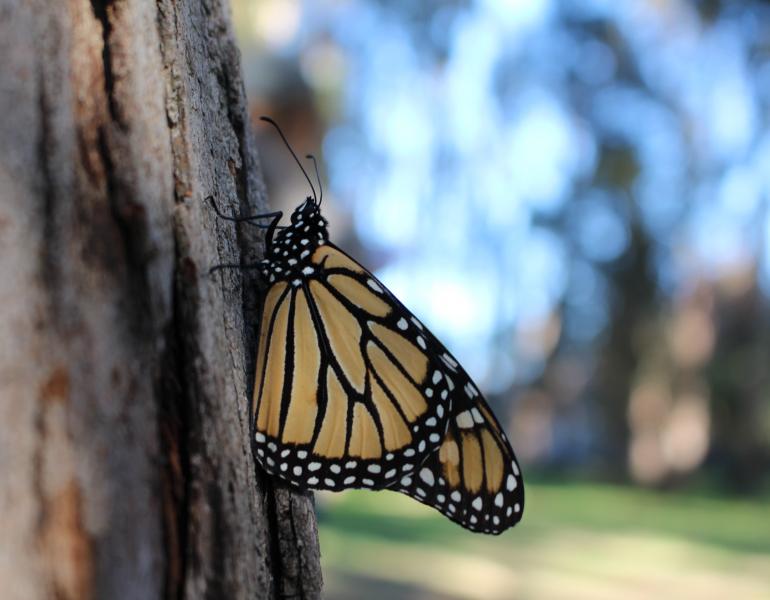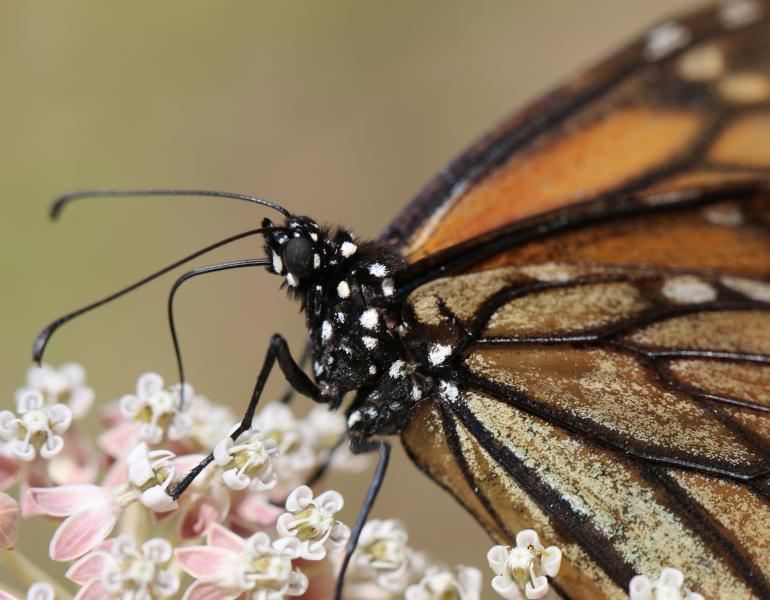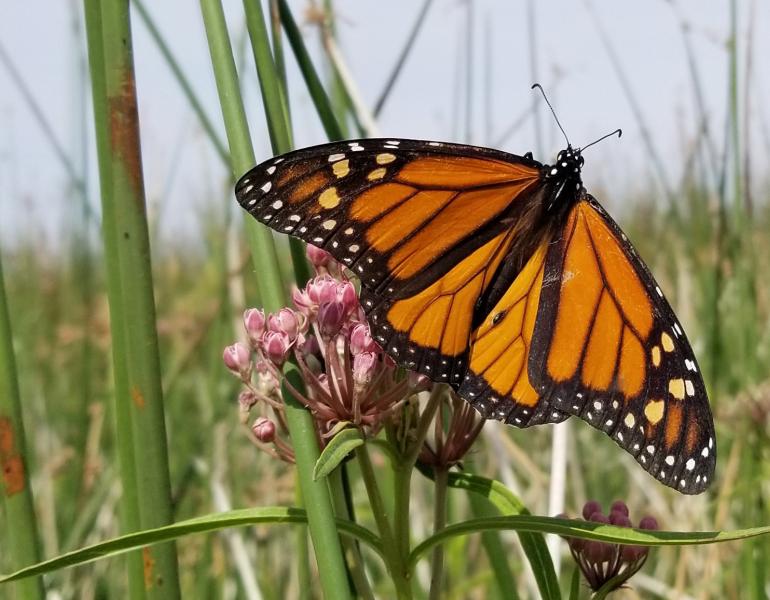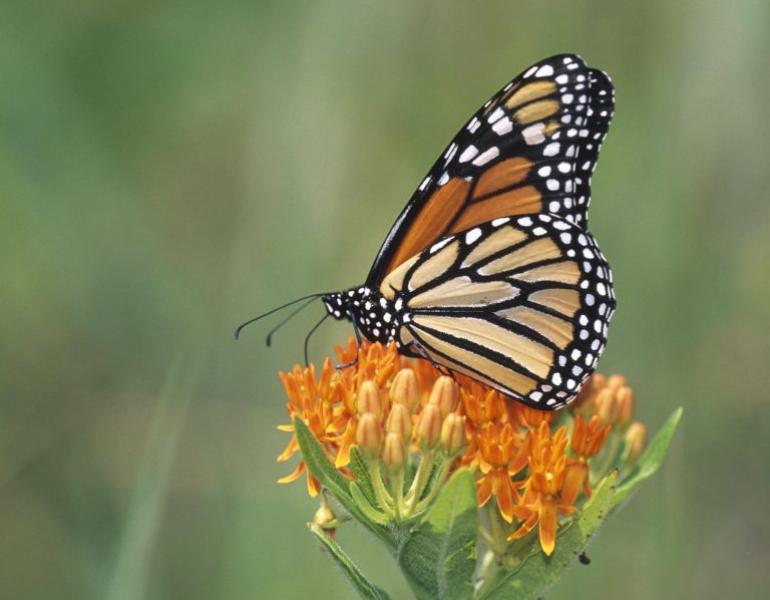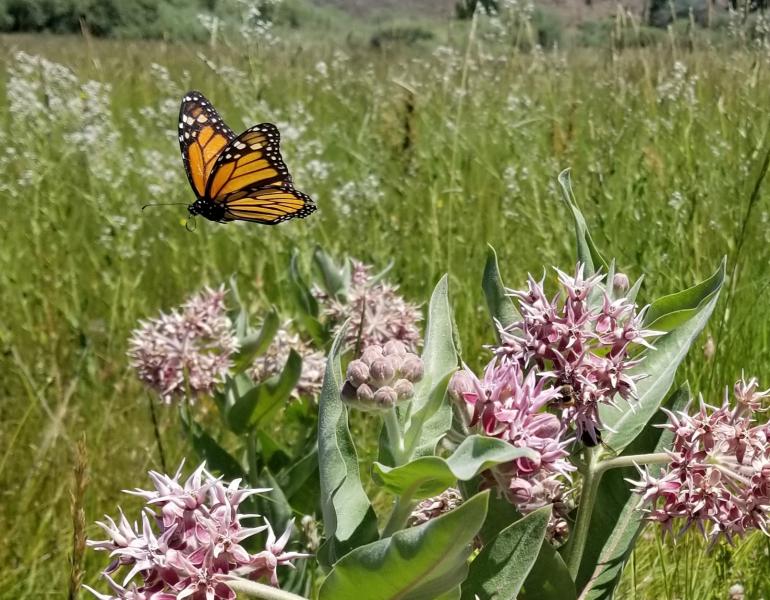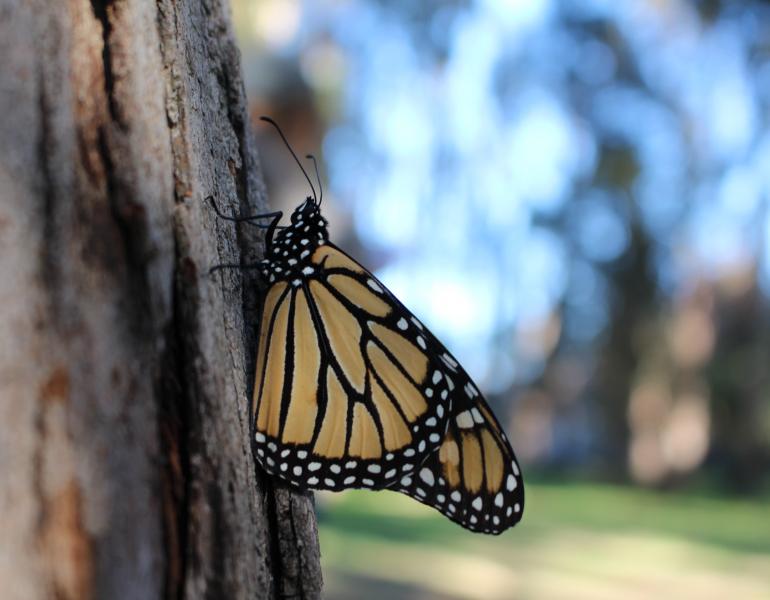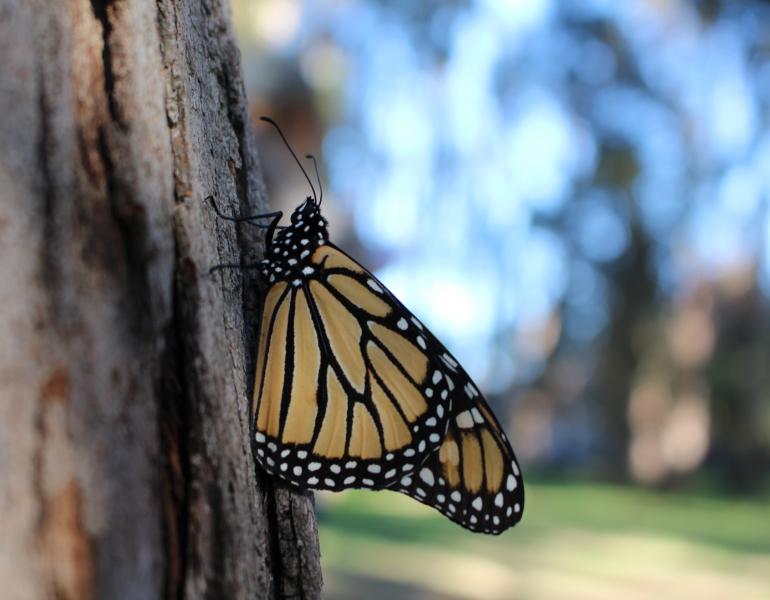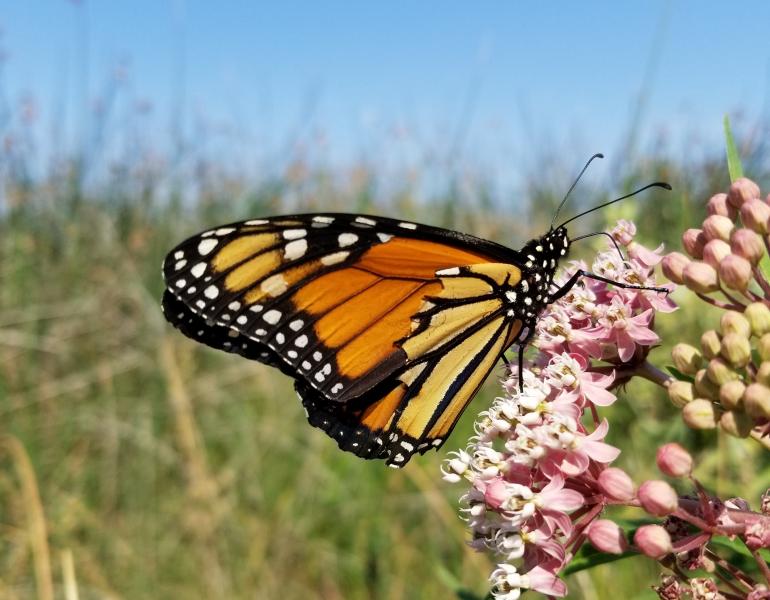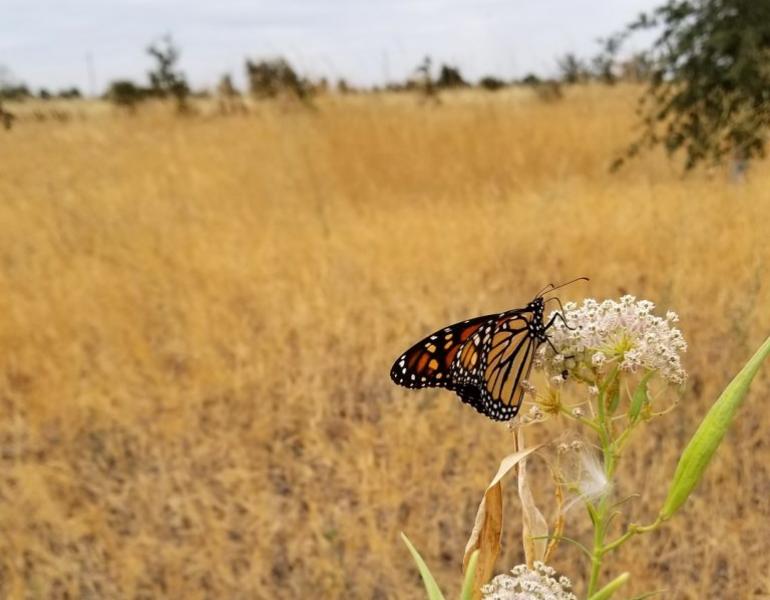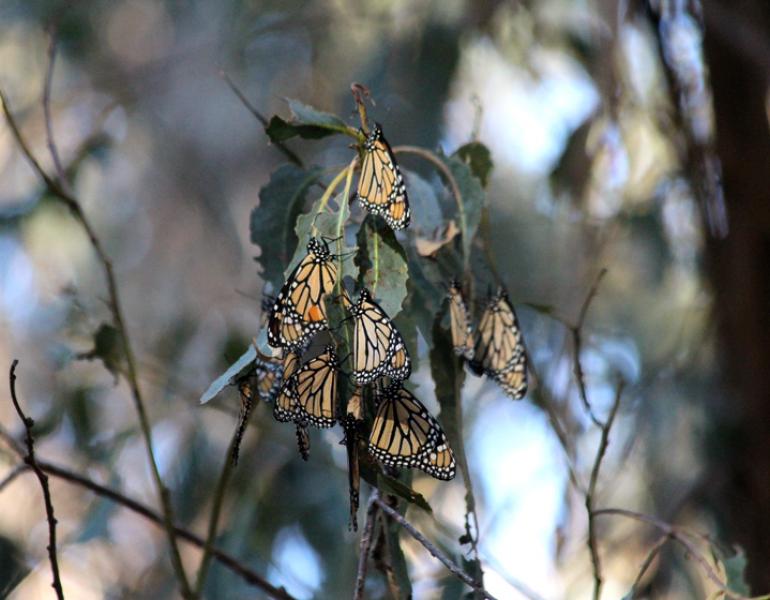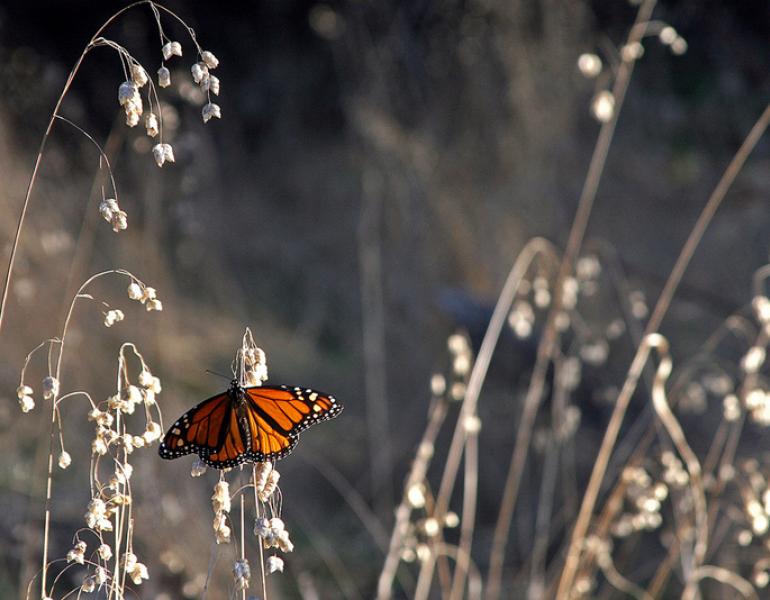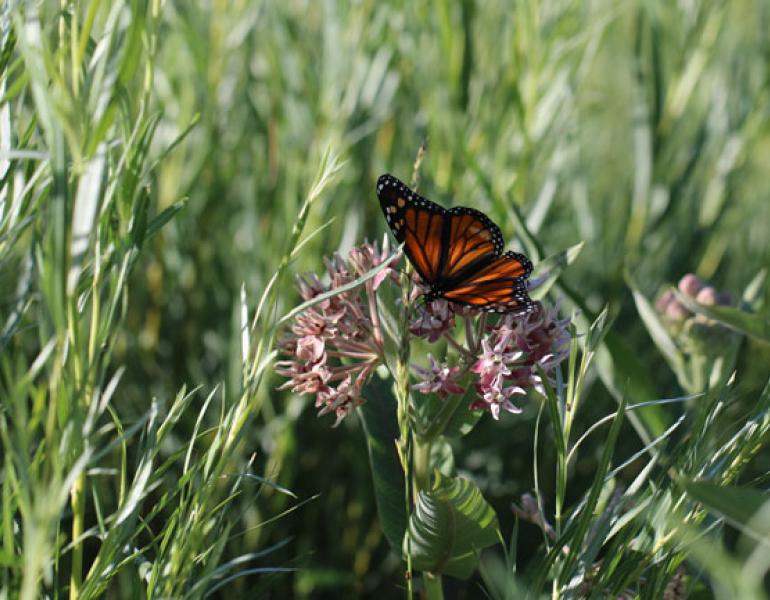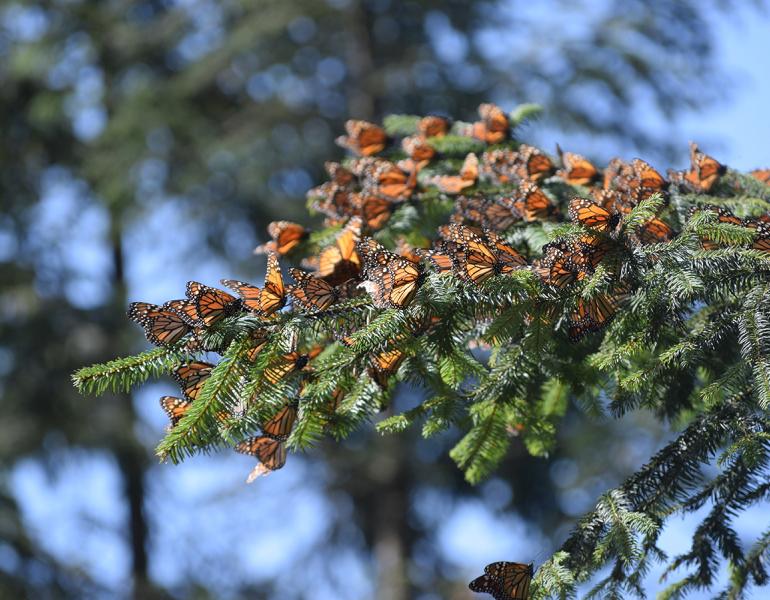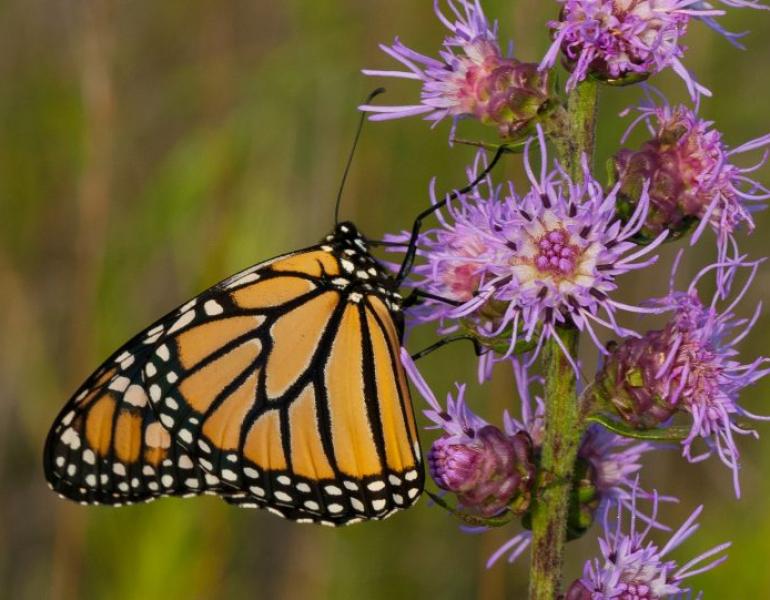A remarkable phenomenon unfolds along the California coast each fall — and you can witness it yourself!
Western Monarchs
Keep Monarchs Wild: Why Captive Rearing Isn’t the Way to Help Monarchs
Instead of rearing—which is risky and unproven in helping monarchs—we should focus on more effective, science-backed ways to conserve these glorious wild animals.
Despite a Lower Peak Season, Western Monarchs Start Spring in Higher Numbers than 2023
Migratory western monarchs underwent a 28% seasonal decrease this winter before dispersing from overwintering sites.
Western Monarch Count Tallies 233,394 Butterflies
The overwintering population of western monarchs remains at approximately 5% of its size in the 1980s.
Top 5 Ways Californians Can Help Western Monarchs
Residents of California are uniquely positioned to help western monarchs, since monarchs are found in California all year long and in all life stages.
Growing the Supply of Hard-to-Find Milkweeds
Great Valley Seed shares the process of growing rare but important milkweed species to supply them for the first time.
Why Monarchs Need Early-Season Milkweeds
Western monarchs need milkweed for breeding as soon as they leave their overwintering sites. That's why we partnered on a project to make early-season native milkweed more available in California.
California Garden Center Leads by Example with Monarch Wishing Tree
Each spring a beautiful ficus tree transforms into something extra special for the folks that visit Roger’s Gardens plant nursery. The Monarch Wishing Tree displays hundreds of well wishes written on little wooden butterflies that support conservation.
New Year’s Count of Western Monarchs Reveals High Seasonal Decrease Following Severe Winter Storms
The Xerces Society’s Western Monarch New Years Count data reveals a 58% seasonal decrease in the overwintering western monarch population. While numbers are expected to decrease between Thanksgiving and New Years for various reasons, this decrease is higher than trends over the last six years.
Western Monarch Thanksgiving Count Tallies Over 330,000 Butterflies Before Storms Batter Overwintering Sites
The numbers are in for the Xerces Society’s 26th annual Western Monarch Thanksgiving Count! Volunteers reported a final tally of 335,479 monarch butterflies. These numbers inspire hope but species recovery remains vulnerable to pressures like habitat loss, pesticide use and climate change. Already, severe storms have taken a toll since the count.
The Current Status of Western Monarch Butterflies, By the Numbers
Volunteers reported another relatively high number of overwintering western monarch butterflies this year, but we don't have enough steady information yet to confirm a statistically significant trend.
D.C. Monarch Summit Secures Funding for Monarch Conservation
Last week, myself, Sarina Jepsen, and Sarah Hoyle of Xerces joined a two-day Monarch Butterfly Summit at the U.S. Capitol Visitor Center in Washington, DC. Hosted by Oregon Senator Jeff Merkley in collaboration with the Department of the Interior, the event brought together key stakeholders to discuss solutions to reverse the declining monarch butterfly, particularly the western monarch population.
Meet the Partners Saving Pollinators with Xerces’ California Habitat Kits
Over the past three years, Xerces’ California Habitat Kit program has given away over 105,000 plants to partners all across California who are interested in creating habitat for monarchs and other pollinators. We’ve been able to work with some really great people as part of this program who have helped to create habitat in a variety of landscapes.
New Year’s Count of Western Monarchs Tracks Population Decline During Overwintering Season
The Western Monarch New Year’s Count serves as a follow-up to the annual Thanksgiving Count to help scientists better understand how the western monarch population changes throughout the overwintering season. Monitoring revealed an average decrease of 38% between the Thanksgiving and New Year’s Counts, within the range of a 36-49% seasonal decline observed over the previous six winters. The overall western monarch population remains higher than in previous years.
Western Monarch Thanksgiving Count tallies nearly 250,000 butterflies
The Xerces Society’s Western Monarch Thanksgiving Count celebrates its 25th year of community science with a surprising and remarkable outcome: 247,237 monarch butterflies observed across western overwintering sites, an over 100-fold increase from last year.
The Bounciness of Butterflies
The western monarch migration is having a better year, but this isn’t population recovery.
The Value of Conservation Planning
Land owners and managers across the state of California have taken up the call to get more habitat in the ground for monarchs. But there’s one important process that comes into play prior to on-the-ground restoration: before we can plant, we plan.
Climate News: Nature-Based Climate Solutions Address Climate Change and Support Pollinators
Habitat restoration can contribute to countering climate change. Native trees, shrubs, flowers, and grasses increase carbon sequestration, while also providing habitat for butterflies and bees.
Applying a Holistic Approach to Monarch Conservation
Xerces is a science-based conservation organization and our work on monarchs is no different. Whether it is restoring overwintering sites in California, creating breeding habitat in New York State, or protecting monarchs from pesticides, science informs our actions and maximizes our conservation return.
Resident Monarch Populations on the Rise in California: What Does this Mean for the Western Migratory Population?
Many people have been seeing and reporting fairly large numbers of monarchs, both adults and caterpillars, all winter long in gardens on the California Coast this year. Since there haven’t been any formal studies of the number of monarchs breeding during the winter in California in prior years, it is difficult to know if there is in fact an increase this year, or if people are paying more attention and reporting them more often.
Fifth Annual Western Monarch New Year’s Count Confirms Continued Decline in Western Monarch Population
Now in its fifth year, the New Year’s Count has given us a better understanding of: 1) how monarch numbers may decline at overwintering sites as the winter progresses; 2) how monarchs move between and within sites; 3) when they leave sites; and 4) the level of mortality that adult monarchs may be experiencing during the winter.
Western Monarch Population Closer to Extinction as the Wait Continues for Monarchs’ Protection Under the Endangered Species Act
During the 24th Western Monarch Thanksgiving Count, nearly 100 volunteers carefully surveyed groves of trees on the California and Northern Baja coast for monarch butterflies. Despite the challenges of conducting field work during a pandemic, volunteers surveyed 246 sites, three more than last year. Unfortunately, to the surprise and dismay of many, only 1,914 monarchs were counted at all the sites. This is a shocking 99.9% decline since the 1980s.
Pollinator Conservation Program Digest – December 2020
This edition focuses on work done across the country to support monarch butterflies and other pollinators. Jessa Kay Cruz describes how Xerces supports groups in California undertaking habitat creation projects, and Jennifer Hopwood presents a series of fact sheets about milkweeds, part of a nationwide project to provide information to roadside managers.
Planning and Planting for the Future of Monarchs in California
Pismo State Beach is one of the most important overwintering sites for monarchs in California. It has regularly hosted over 10% of the entire western monarch population each winter. Xerces Society has partnered with California State Parks, Creekside Center for Earth Observation, and others to develop and implement a plan to restore and enhance the site’s ability to host monarchs.
Monarch Population in California Spirals to Another Record Low
Early count numbers from Xerces’ Western Monarch Thanksgiving Count suggest that the western migratory population is headed for an all-time low. If early data reflects monitoring at the rest of the sites, we may see fewer than 10,000 monarchs overwintering in California this year.
Western Monarch Breeding Season Status
The western monarch breeding season is coming to a close for 2020 and we are in the midst of the fall migration—the time when monarch butterflies are making the long journey back to their overwintering grounds. Following two years during which the western monarch butterfly population hit the lowest levels ever recorded, researchers were looking for signs of a successful breeding season.
Supporting Community Efforts to Create Monarch and Pollinator Habitat in California
Creating habitat in California is an essential step in recovering the monarch -- as well as to support the many other species of butterflies and bees in that state. Xerces worked with local native plant nurseries to create and distribute monarch and pollinator “habitat kits”, each with more than a thousand climate-smart, locally native plants -- enough to make a lasting impact for monarchs.
Science Notes: How Pesticide Sampling Can Help Restore Imperiled Western Monarchs
California’s Central Valley is critical breeding habitat for migrating western monarchs. In partnership with the University of Nevada, Reno, Xerces scientists tested milkweeds growing in the valley for pesticides. Sixty-four different pesticides were found across the samples, with an average of nine pesticides per sample.
Monarchs Overwintering in Mexico Down 53%
This decline makes it clear that monarchs are not recovering and still urgently need Endangered Species Act protection in the United States and extraordinary conservation efforts throughout North America. Learn how to help here.
New Year’s Count Finds Continued Decline of Monarchs Overwintering in California
Monitoring revealed an average decrease of 46% between the Thanksgiving and New Year’s counts. While the decline is alarming, the silver lining is that this data has provided a concrete list of priority sites to target for conservation efforts.
The Vanishing Butterfly Groves of California
The latest research suggests that the damage and loss of overwintering habitat is one of the primary drivers of the decline of western monarchs. Together, we can make overwintering site protection and management a reality.
Thanksgiving Count Shows Western Monarchs Need Our Help More than Ever
The western monarch population remains at a critical level. With some luck and a lot of hard work, we have hope that we can save this incredible migration.
Monarch and Pollinator Habitat Kits Designed to Support Imperiled Western Monarchs
These specially designed kits, geared towards large-scale projects, incorporate native milkweeds, nectar plants, and climate considerations.
Western Monarchs: Notes from the Field
Staff from the Xerces Society and our partners have been keeping close eyes on the imperiled western monarch population at study sites in California, Nevada, Oregon, Washington, and Idaho as part of a multi-year collaborative research project.
Pollinator Conservation Program Digest – September 2019
September’s featured staff members have been providing Monarch and Pollinator Habitat Kits to select organizations in California, training Colorado Department of Transportation staff on roadside pollinator habitat, and attending the America’s Grasslands Conference, held this year in North Dakota.
Community Science Powers New Western Monarch Studies
Western monarch researchers and community scientists have been busy, contributing information vital to understanding the situation facing this imperiled population.
Working to Conserve Monarchs from Coast to Coast
The Xerces Society is working across the U.S. to conserve this beloved species, and there are a number of ways you can help!
New iNaturalist Project Makes it Easier to Submit Data to the Western Monarch Milkweed Mapper
We need all hands on deck this season, to better understand the hurdles facing the imperiled western monarch population!
How to Support Monarch Butterfly Conservation—During Earth Week and Beyond!
Helping the monarch back to full health isn’t going to be easy or quick, but together we can transform the landscape to allow the monarch to rebound—and give our children the gift of watching orange wings flap in the sunshine.
Community Scientists Can Help Support Imperiled Western Monarchs
While hiking in California and the rest of the West, you can help researchers by submitting any and all monarch and milkweed observations this year to the Western Monarch Milkweed Mapper website.
Photo Essay: Trinational Monarch Meeting and Exploring Mexico’s Monarch Overwintering Sites
Xerces Society Endangered Species Conservation Biologist and Western Monarch Lead Emma Pelton recounts her recent experience in Mexico with this photo essay.
New Year’s Count of Western Monarchs Confirms Decline, Trends Seen in Previous Years
Overall, the count data revealed an average decrease of 38% between the Thanksgiving and New Year’s counts.
Record Low Number of Overwintering Monarch Butterflies in California—They Need Your Help!
We urge you to join us and our colleagues in the western monarch science and conservation community in taking meaningful, swift action to help save western monarchs.
Early Thanksgiving Counts Show a Critically Low Monarch Population in California
The California overwintering population has been reduced to less than 0.5% of its historical size, and has declined by 86% compared to 2017.
Western Monarch Numbers Expected to Be Low this Year
What can you do to help the monarch? Protect habitat, avoid pesticide use, plant gardens, and contribute data to Xerces-led community science efforts.
Managing for Monarchs in the West
A new guide to protecting the monarch butterfly from the Pacific to the Rockies presents a holistic approach to monarch conservation.
Tropical Milkweed—a No-Grow
Milkweed is in demand, and that demand has been filled in recent years by tropical milkweed, a non-native species. But is planting tropical milkweed potentially doing more harm than good?
Second New Year's Count Supports Monarchs' Movement Between Sites
The Xerces Society's Western Monarch Thanksgiving Count provides a long-running record of the number of monarchs overwintering in California-including the steep decline of recent decades.
Newly Released Monarch Overwintering Site Management Plan Provides Blueprint for Protecting and Managing Monarch Groves
This western monarch butterfly overwintering site management plan also serves as a template for land managers at other overwintering sites.
Very Low Numbers of Monarchs Overwintering in California may Reflect an Unusual Fall
Unusual fall weather may have contributed to the lowest overwintering western monarch population recorded since 2012.
2017 Monarch Numbers Are Down, Lengthening a Worrying Trend
A documented 74% decline in the California overwintering population since the late 1990s mirrors the steep decline, estimated at 80–90%, of the number of butterflies in Michoacán over the same period.
Western Monarch Conservation: A 40 Year History
For 40 years, the monarch migration phenomena has been recognized as a conservation priority.
To Save Monarchs, We Need More than Just Milkweed
Adult monarchs need nectar to fuel them during spring migration and breeding and to build up stores of fat which sustain them during fall migration and winter.
Monarch Butterflies in the Western United States
Much of the focus on monarch butterflies is on the eastern population. Monarchs in western North America are in greater decline and need conservation help.
Monarch & Milkweed Workshops Engage Public Land Managers in Western States
These trainings are part of a partnership to increase the number of biologists, land managers, and agency staff working towards western monarch conservation.


